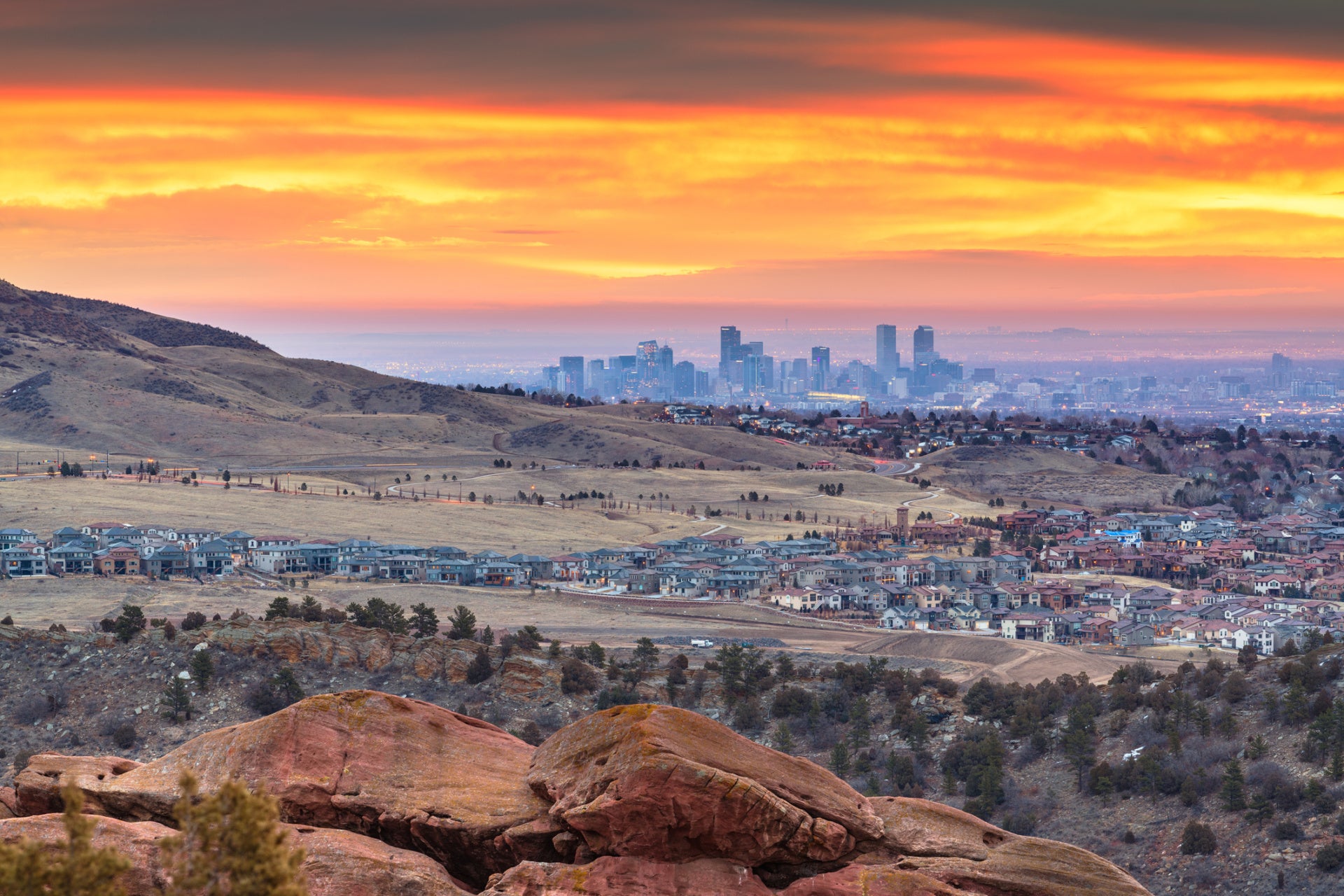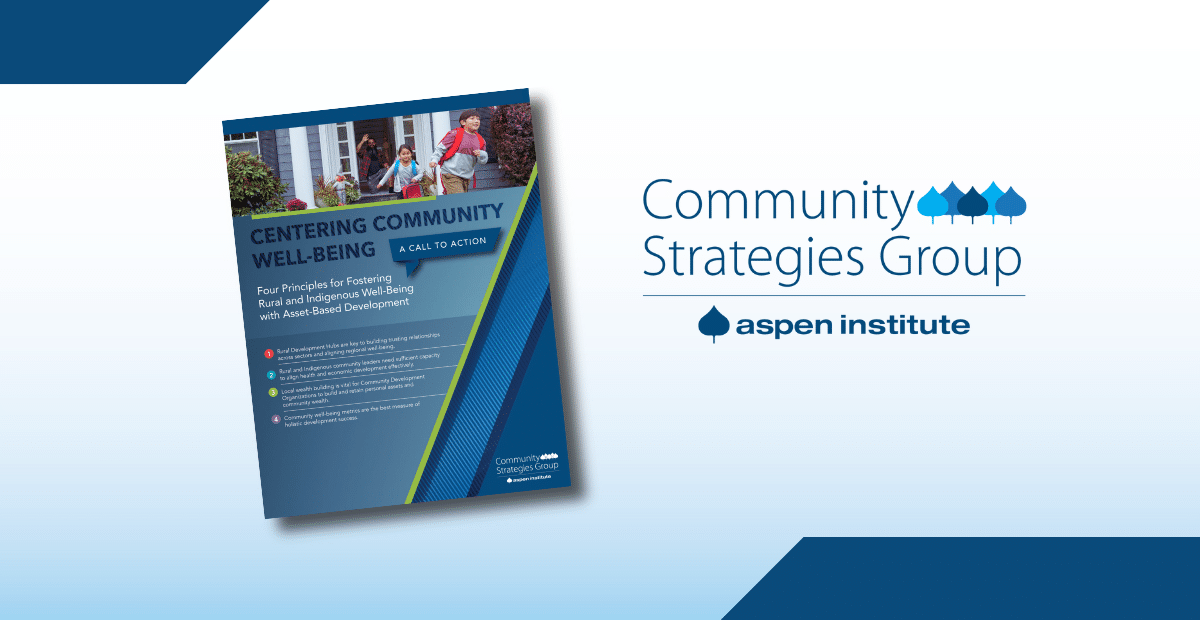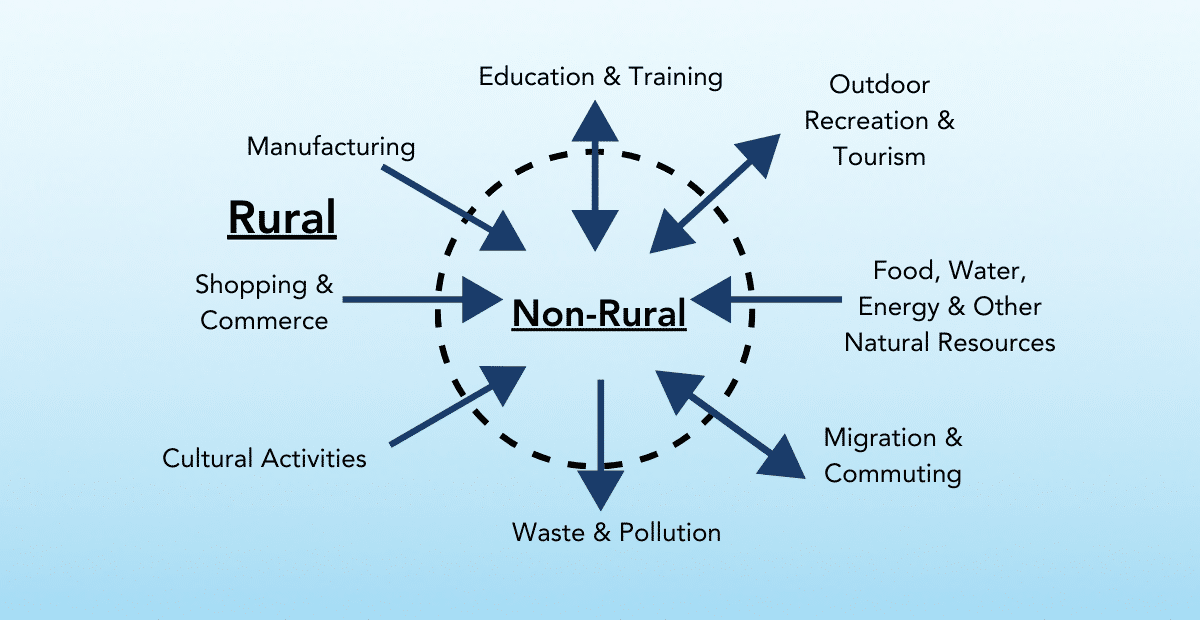In the last two election cycles, much has been written and said about the disproportionate influence that rural voters and rural states have on the outcome of national elections. Some have proposed elimination of the Electoral College as a solution to this perceived problem.
We question the wisdom and potential efficacy of this proposed quick fix for what ails us. However, before we get into the question about whether steps should be taken to limit the disproportionate Electoral College influence of rural voters, we think it is pertinent to examine how we got here, and just how many rural voters there truly are.
THE GENESIS OF RURAL DISAFFECTION AND CURRENT RURAL VOTING PATTERNS
Before the election of Donald Trump, it was nearly impossible to get media attention for the plight of rural places across America. Rural places were written off as irrelevant “fly-over country.” After the 2016 election demonstrated that rural America still had some clout and could tip an election in favor of an otherwise unpopular candidate, reporters descended on rural places. They generally wrote shallow snapshot pieces portraying rural voters as unsophisticated yokels duped by Trump’s false promises.
Very few published articles explored the depths of rural disaffection, its root causes, or the complexity of the interrelated issues that have led so many rural voters to embrace a profoundly flawed presidential candidate through two election cycles.
We could write volumes on the interconnected issues that underlie rural disaffection and that have influenced so many rural voters to abandon the Democratic Party and centrist Republicans in favor of elected leaders that promise radical change. Instead, we will briefly introduce three of the most significant.
1. Economic Exploitation
Rural people are profoundly aware that America’s cities could not exist without the resources, goods and services they produce.
Metropolitan areas rely on their rural neighbors for their food, energy, building materials, clean water supply, raw materials and most American-made manufactured goods. A majority of the personnel in the military that protects us all is drawn from rural America. Metropolitan garbage is shipped to rural areas for disposal, often contaminating rural water supplies. So too are most of the prisoners incarcerated by America’s ultra-punitive criminal justice system.[1]
Rural people also know they have little or no control over these assets that support American cities and undergird the rural economy. Nor do they have leverage to ensure that they receive reasonable compensation for their roles in supporting metropolitan America. Most of these assets are absentee owned, and the vast majority of the wealth created with them goes to urban- centered corporations and the stockholders that control them.
Even seemingly more prosperous families, such as those that own large farms across the Midwest, have little control over their economic future. Mega-corporations control most markets for agricultural goods and often fix prices at levels below the cost of production. Meanwhile, in states where it is not prohibited, private equity firms, insurance companies and other large corporations buy up huge swaths of farmland and import low-paid labor to work the land. Most of these entities own their own seed, fertilizer and equipment suppliers. When they purchase a section of land, they reduce local economic benefits derived from that land to just the property taxes paid. Meanwhile they lobby state legislatures to keep tax rates on agricultural land ultra-low to “protect family farmers.”
Or consider horticultural product growers whose market is now dominated by large chains like Walmart. These chains place huge orders requiring the growers to expand. Then, when the rural growers are trapped with the debt incurred to finance that expansion, the chains reduce the price offered to growers to a level where the growers’ companies can no longer make a profit or adequately pay their workers. The same practices are used by large chains in contracting with rural manufacturers. Company owners and workers across rural America regularly fall victim to these exploitive practices.
Even our public lands and national forests are managed in ways that minimize the economic benefits returned to the people who live in and around them. Timber and mineral leases are bundled into tracts too large for small rural companies to bid on. Likewise, forest management contracts are typically aggregated into bundles too large for local companies to fulfill. Only very large companies operate at a scale allowing them to bid, and the profits flow to distant executives, owners and stockholders. Local communities see few benefits except low-paid jobs offered by distant corporations.
Rural people understand that the deck is stacked against them, and that most of the profits from rural land and labor are stripped off to enrich distant companies and their shareholders. They also have little choice but to take what is offered so they can put food on their tables. It should not be surprising that this makes them angry and encourages them to embrace candidates that promise to “drain the swamp,” and tear down the current order.
2. Concentration of Media
Over the last 50 years, rural America has moved from having a diverse and robust ecosystem of locally owned media to an increasingly concentrated network of highly partisan news outlets feeding the same biased programming across the expanse of rural America. These changes make it easy for a few wealthy and politically motivated media owners to feed a barrage of disinformation. This has radically tilted attitudes and beliefs of rural people in ways that undermine our democracy.
In past decades, prior to the introduction of the internet, local newspapers and radio stations were the primary vehicle for news dissemination in rural America. Distant broadcast TV stations did provide national and statewide news, but most of rural America was unserved by local TV news coverage. Many rural areas lacked a reliable broadcast TV signal, further reducing access to broadcast TV news.
Newspapers have always been subject to the editorial biases of their owners. But prior to the advent of radio and TV, the economics of the industry allowed most communities to have access to a choice of local papers. Enough rural people knew the publishers and editors, and understood their viewpoints and biases, to be able to form their own opinions.
With the advent of radio, the economics of the newspaper industry began changing. With radio, rural people were able to receive news for free and in a more convenient and timely fashion. Newspapers began to experience circulation declines, driving many smaller papers out of business. Fortunately in those days, the Federal Communications Commission (FCC) required all radio stations to have their main offices and broadcast studios located in the communities they served. In addition, FCC’s fairness doctrine together with public service requirements required stations to cover local and national news in a largely nonpartisan fashion.
The advent of cable TV and willingness of rural people to pay for decent TV reception increased access to TV news, but further diminished the viability of newspapers. It also put stresses on radio advertising revenue, creating pressure for stations to consolidate. Local cable companies could sell advertising and insert it into dedicated slots in the shows they distributed. When CNN and other cable news stations arrived on the scene, cable also opened access to news coverage unaccountable to anyone for providing fair and balanced coverage.
The advent of the internet provided the last nail in the coffin for most rural newspapers. At about the same time, the 1996 Telecommunications Act deregulated radio station ownership, eliminating the local main office and studio requirements. Coupled with the FCC’s 1987 move to drop the Fairness Doctrine, this paved the way for radio stations to become powerful tools for promoting partisan political positions.
Deregulation was billed as a way to increase competition, but by 2002 the radio industry consolidated to the point where just 10 parent companies controlled two-thirds of the listeners and revenue. These companies bought the best stations with the strongest signals, often with one parent company controlling all the major stations serving an area. This sucked the advertising revenue out of smaller stations, forcing their closure or sale at distressed prices, further consolidating the market – a trend that has continued to this day.
New technology permitted multiple stations to be controlled from a central location and to broadcast identical content while inserting local advertising. As a result, today most of rural America receives identical radio programming, with content controlled by a few ideologically motivated owners. So, for instance, in 2003 when the then Dixie Chicks made statements criticizing George W. Bush on stage in England, Clear Channel (now iHeartMedia) immediately banned them from its 1240 mostly rural stations.[2]
The advent of the internet has been both a blessing and a curse for rural news coverage. Recent events have made us all aware of the dangers of unfiltered internet content proliferated by biased and sometimes malevolent sources. However, the internet also provides the means to affordably distribute crowd-sourced local news and affairs in rural places that otherwise have little access to local information.
That said, a very large percentage of rural households lack the ability to hook up to any form of broadband internet service. As of 2017, the FCC estimated that 24% of rural residents lacked broadband access of any kind (including wireless access) and another 14% had no access to any form of fixed internet connection, even local dial-up service. Here in Appalachian Ohio, local research shows that FCC coverage statistics heavily overstate access and far higher percentages are unserved.[3]
By FCC definition, everyone living in a Census block has access if one household in that block is served. Rural Census blocks often encompass between 20 and 300 square miles (or more in lightly populated areas). That Appalachian Ohio research has identified multiple Census blocks where there are 10-20 unserved households for every one that is served, but the FCC reports the entire Census block as having service. This pattern holds true across much of rural America.
As a result of these media consolidation trends, the information reaching rural citizens is increasingly biased, in a self-reinforcing way. Ultra-right radio programming quotes reports from ultra-right TV news and ultra-right websites, creating a web of mutually reinforcing ultra-right messages. Together they paint a consistent but largely false picture of public affairs.
Is it any wonder that so many rural people believe the “alternative facts” that dominate the messaging in virtually all the media they can readily access?
3. Abandonment of Rural by the Center and the Left
For decades prior to the 2016 election, thought leaders, pundits and think tanks across America pontificated about the “decline” of rural America and its “irrelevance” in American economic and political life. Reports from prestigious institutions like The Brookings Institution focused on urban problems and solutions and largely ignored rural America. Books like Richard Florida’s 2002 work “The Rise of the Creative Class” focused the dialogue in the U.S. Capitol and many Statehouses on redirecting and concentrating resources to build more attractive cities.
Even major philanthropic foundations that were once the champions of rural innovation and development abandoned rural America. The new CEO of one of America’s largest and best-known foundations, which had a long history of fighting rural poverty, was publicly quoted by their staff as saying, “If the people in rural America don’t like it there, they should all move to its cities.” Needless to say, that foundation eliminated virtually all its rural funding.
The Democratic Party, which historically experienced strong rural support from farmers, laborers and miners, turned its eyes away from the poor and working classes of rural America in favor immigrants and minorities in America’s metropolitan cores.[4] Leaders of the party argued that its future was metropolitan, as America metamorphosed into a largely urban, minority-majority nation. Rural areas, which were always harder to organize due to long distances and low population density, received less and less attention with every political cycle. Demographic statistics that showed a rapid decline in the rural share of America’s population seemed to support these decisions.
What few political leaders in the center and on the left realized was how distorted these supporting statistics were. The reported “decline” of rural population was almost entirely a function of the way the Census Bureau and other researchers defined rural rather than a mass movement of people into metropolitan centers.
Counties are now added to metropolitan areas once a critical mass of their population simply commutes into the metro area for a job. This is true regardless of whether the population density or rural character of the place where the commuters live has changed. Thus, each time a new Census is completed, more rural counties whose residents commute into counties considered rural in the prior Census are reclassified as part of metro areas simply because of their commuting pattern.
The result is that millions of people living in profoundly rural places are now counted as metropolitan. The definitions so distort reality that the entire Mojave Desert is considered metropolitan according to the Census classification. By some estimates, there are now more people living in rural places officially classified as metropolitan than in the rest of rural America combined. As many as one in three Americans currently lives in a place that is primarily rural in character – about twice as many as the official statistics count.[5]
Metro-centric national and state policies are seldom appropriate for these newly classified metropolitan counties. They share more characteristics with their rural cousins one ring farther out from the true metro core. Furthermore, these officially metropolitan voters understand that their policy interests lie more with their officially rural neighbors and that their elected representatives have largely abandoned them.[6] They also receive most of their news from the same, highly biased sources as other rural places.
However, the true scope of rural America was not lost on the business elites who control much of the funding flowing into Republican coffers and exercise outsized influence on Republican platforms and priorities. America’s business elite has long relied on deep demographic analysis in forming its plans and strategies.
A case in point is Sam Walton, founder of Walmart and prominent Republican Party supporter prior to his death in 1992.[7] Walton built the world’s largest company (by revenue) with a predominantly rural strategy. For decades all Walmart stores were built in rural and small urban places. It wasn’t until most rural market opportunities were exhausted that Walmart began opening metropolitan locations to continue to fuel its growth.
Republicans understood the need to broaden their support and build a bigger tent. Policy positions designed to tilt the playing field to further increase the power and wealth of America’s financial elite were never going to attract enough voters to be put into law. Most of us are well aware how the party co-opted the religious right and pivoted from being the party of Lincoln to the party of white supremacy to broaden their tent.
What is less known is the massive investment of the party’s financial elite into messaging research to find ways to convince rural and low-wealth voters that the interests of the elite were their interests too. Perhaps their biggest early success in this regard was rebranding the inheritance tax as the “Death Tax.” Other notable successes included castigating poor single (especially Black) mothers as “Welfare Queens” undeserving of tax-funded support, rebranding efforts to publicly fund segregated private schools as “school choice” and whitewashing the image of ruthless corporate owners and managers by labeling them as “job creators.”
The list of intentionally deceptive messages is nearly endless and covers virtually every issue supported by the nation’s wealthy elite. The uptake of these distorted messages in rural areas was further ensured by the control of virtually all major rural news and information sources by ultra-right media companies. In addition, the constant economic exploitation of rural resources and workers, and resulting economic decline of so many rural places, “primes the pump” – increasing the credibility of these messages as people try to make sense of the forces devastating their lives. By making people of color, immigrants and gay people into scapegoats, the wealthy elites controlling rural media push an agenda of “moral” reform while demonizing Democrats as pedophiles and cannibals. The audacity is stunning.
Once again, the question is: “Is it any wonder” that so many rural people have come to believe ultra-right memes, developed by well-funded messaging research projects, and pushed by parties that control nearly all rural broadcast media outlets?
IS ELECTORAL COLLEGE REFORM A SOLUTION?
The observation precipitating this discussion is that moderates and progressives can “fix” the problem of “uninformed” rural voting patterns by eliminating the Electoral College and thereby consolidating political power in highly populated states. While there are many counterarguments, we believe that three are sufficiently powerful to put to rest the idea that electoral reform is the way out of this mess.
1. Rural is too Big for Electoral College Reform to Tackle Alone
As discussed earlier, rural places in America are home to about twice as many people as the number that widely disseminated demographic statistics suggest. About one in three Americans lives in places that are rural in character, no matter whether they are officially classified as metropolitan. These officially metropolitan rural people live in many of the states that supporters of electoral college reform believe would swing the country to their side.
Think about Pennsylvania, Ohio, Michigan, Florida, Arizona, New Mexico, North Carolina and even Georgia. All have substantial rural populations and likely have even larger numbers of officially metropolitan voters who actually live in very rural places. If we eliminate the Electoral College to decrease the impact of rural voters, we still haven’t addressed the true impact of rural votes in highly populated swing states that often decide our elections.
2. Disenfranchisement Foments Rebellion
Throughout history, any people, when sufficiently disenfranchised and economically downtrodden, will eventually rebel. As we can see from the events on January 6th, a whole lot of Americans have reached that point. The control of rural media outlets by the ultra-right has whipped up and channeled that rage, pointing it towards the center and left in American politics. Eliminating the Electoral College would play directly into the narrative created by the ultra-right media by demonstrating the “truth” of the message that the left wants to take away the rights of rural people.
We strongly believe that any concerted effort to eliminate the Electoral College now would backfire on those who support it. If done in the wake of the widely believed lies about the left “stealing the election,” it would almost inevitably lead to additional violence.
3. A Tyranny of the Majority Threatens Us All
In Federalist Paper No. 51, Madison discusses the checks and balances built into the Constitution to keep those in the majority from disregarding the rights of the minorities in our society. Imperfect as it may appear, the Electoral College is one of those checks and balances. It helps ensure that states with a majority of the population are unable to ignore the interests or strip the rights of those in states with fewer people. Like the other checks and balances, it is designed to drive people towards compromise and thereby promote social stability – compromise, in this case, in their selection of presidential candidates that can be supported by a wider range of the American people.
And yes, we fully realize that a driving force in establishment of the Electoral College was to protect the institution of slavery. But even that history cannot negate the value of having checks and balances in our system of government, as imperfect they may be and as heinous as the motivations of some of those who established them. If we threw out every aspect of our Constitution that was written in consideration of protecting the institution of slavery, we would have little left. Even the Thirteenth Amendment abolishing slavery made an exception for incarcerated people.
All of us are in the minority in some aspects of our lives. In some unforeseeable set of future events, we may be the ones whose rights are protected by the Electoral College’s requirement that America’s President and Vice President are elected through a process that balances the rights of people in individual states with the rights of the majority as a whole.
We do not believe that the Electoral College must be retained for all time. However, if we abolish it, we must consider and address the potential unintended consequences, and ensure that we retain mechanisms to protect the rights of the minority from the interests of majority when those differences break along states’ lines. This is a very unpopular position among those who share progressive values, but one bearing consideration in this debate.[8]
CONCLUSION
So, perhaps there are better questions than “Will abolishing the Electoral College fix our democracy?” Two of those better questions may be “How can we address the domination of rural media by a few highly partisan ultra-right-wing media conglomerates that systematically manipulate the rural electorate to achieve their self-serving goals?” and “How do we rebalance the economic playing field so that all Americans, whether rural or metropolitan, are protected from economic exploitation and receive a fair share of the wealth generated through their labor?”
——————————————
John Molinaro and Solveig Spjeldnes are Principals with RES Associates LLC in Athens, Ohio, a consulting firm working to improve the prosperity of rural places and the people who live in them. John formerly served as President and CEO of the Appalachian Partnership, Inc. and the Appalachian Partnership for Economic Growth, and as Co-Director of the Aspen Institute Community Strategies Group, where he remains a member of its Rural Development Innovation Group. Dr. Solveig Spjeldnes served as Associate Professor in the Department of Social Work at Ohio University, teaching social welfare history and policy. Her research portfolio focused on rural criminal justice and poverty. Reach them at RuralEconomicSuccess@gmail.com.
[1] While some argue that prisons are a boon to rural economies by providing substantial employment, the low wages and emotional toll for those whose work is to enforce the fundamentally inhuman conditions in most American prisons have a huge impact on worker emotional and mental health and are destructive to communities.
[2] IHeartMedia and other owners have moved to reduce costs by shutting down stations where they own multiple outlets in the same market. Its website now states: “With more than 850 live broadcast stations in 153 markets across America, there’s a local iHeartRadio station virtually everywhere.” The same can be said of the handful of competitors that own most of the rest of the stations across rural America.
[3] See https://www.bloomberg.com/news/articles/2020-02-19/where-the-u-s-underestimates-the-digital-divide
[4] Ironically, this reasoning ignores the fact that, in Census-designated rural counties, people of color comprise 21% of the population and account for 83% of the population growth (2000-2010).
[5] See the various works of the Dr. Andrew M. Isserman, who was among the first to write about this problem and propose a set of alternative classifications that would more accurately reflect the rural vs. urban character of places.
[6]The effects of gerrymandering further influence this disenfranchisement but are beyond the scope of this discussion.
[7] Walton’s family followed in his footsteps as prominent Republican supporters, but recently began to shift from a “Red” to a “Purple” approach in their political support.
[8] See Jane Kleeb’s excellent discussion of this topic and alternatives to address the shortcomings of the Electoral College in her excellent book, Harvest the Vote, HarperCollins Books, 2020







